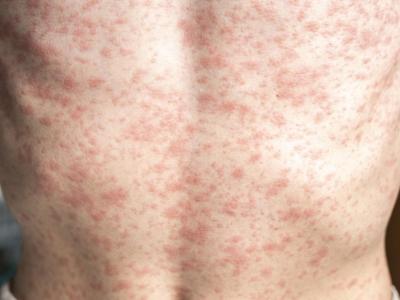Study finds widespread, arbitrary antimicrobial use in Cambodian pigs
A study yesterday in Antimicrobial Resistance and Infection Control reports widespread and arbitrary use of antibiotics on small-scale pig farms in Cambodia.
In the study, a team of Swedish and Cambodian researchers conducted a survey of small-scale pig farms in and around Phnom Penh to assess the farmers' knowledge, attitudes, and practices related to antibiotic use in pig production. In addition to asking the farmers to fill out a questionnaire, the researchers collected fecal samples from three healthy pigs at each farm, isolated Escherichia coli isolates from those samples, and tested the susceptibility of the isolates to 14 antibiotics.
The results showed that at least 70 different brands of antimicrobial drugs were used on the farms, with amoxicillin, tylosin, gentamicin, and colistin being the most commonly mentioned or kept by the farmers. While nearly all the respondents (99%) said antimicrobial use was necessary to keep pigs healthy, knowledge of antimicrobials and how they work was low, and antimicrobial use was mainly based on farmers' experiences. Around 66% of the farmers reported frequently self-adjusting treatment duration and dosage. Fewer than half (45%) had heard the term antimicrobial resistance.
The E coli isolates exhibited high prevalence of resistance to several antimicrobials considered critical for human medicine, including ampicillin (75%), ciprofloxacin (59%), and colistin (20%), and multidrug-resistance was found in 79% of the samples. Isolates on farms where antimicrobials were administered preventatively showed a higher prevalence of resistance, as did those from farms where entire groups of pigs were treated, rather than just sick individuals.
"These results confirm the hypothesis that non-rational use of antimicrobials results in higher prevalence of AMR and highlight the need for professional animal health systems that involve medically rational use of antimicrobials in emerging economies such as Cambodia," the authors conclude.
Mar 7 Antimicrob Resist Infect Control study
MERS hospital outbreak grows in Riyadh
Yesterday the Saudi Arabian Ministry of Health (MOH) confirmed another case of MERS-CoV acquired during the patient's stay at a Riyadh hospital.
A 60-year-old Saudi man from Riyadh is in stable condition after being diagnosed as having a MERS-CoV (Middle East respiratory syndrome coronavirus) infection. This is the fifth case in a presumed hospital-based outbreak that has included three other patients and one healthcare provider. All of the recent cases have involved men.
The MOH also announced the death of a previously reported patient, an 82-year-old Saudi man from Riyadh. It does not appear that the man was part of the current hospital-related cluster.
Saudi Arabia's MERS-CoV total cases since 2012 have now reached 1,814, including 736 deaths. Ten people are still being treated for their infections.
Mar 7 Saudi MOH report
More yellow fever in Brazil as case totals top 800
The Brazilian MOH yesterday reported 123 new confirmed cases of yellow fever, including 23 deaths, last week.
The new cases brings the totals for the current season, which began on Jul 1, 2017, to 846, with 260 deaths. There have also been 3,234 suspected cases reported during this period.
The case count is a significant jump from the previous season. Between Jul 1, 2016, and Mar 6, 2017, there were 597 confirmed cases and 190 deaths from infection with the flavivirus.
The reason this year's outbreak is bigger, the ministry said, is because the virus is concentrated in Bahia, Sao Paulo and Rio de Janeiro states, home to Brazil's largest cities and unvaccinated populations. The government is continuing a yellow fever vaccine campaign it began in February to target citizens in those states.
As of Mar 6, 17.3 million inhabitants of those states have been vaccinated, representing 76% of the targeted populations. The ministry said 8.4 million (90%) of people were vaccinated in Sao Paulo and 7.1 million (71.5%) in Rio de Janeiro. In Bahia, 1.8 million people were vaccinated, which makes up 55% of the target population.
Mar 7 Brazilian MOH update
105 more sickened in Salmonella outbreak linked to chicken salad
The Centers for Disease Control and Prevention (CDC) announced today 105 more cases of Salmonella infections linked to contaminated chicken salad sold at grocery stores in the Upper Midwest. Now there are 170 cases in seven states.
So far 62 people have been hospitalized but no deaths have been reported in this outbreak. Illnesses-onset dates ranged from Jan 8 to Feb 18, and 66% of patients are female. Two new states—Indiana and South Dakota—have reported cases since the CDC's first report on the outbreak on Feb 21.
Of 159 people interviewed, 82% reported eating chicken salad from Fareway stores in the week prior to illness. According to the CDC, Triple T Specialty Meats, Inc. produced the chicken salad that ill people reported eating.
On Feb 21, Triple T Specialty Meats, Inc. recalled all chicken salad produced from Jan 2 to Feb 7, the CDC said. The chicken salad was sold at the deli counter in stores in Illinois, Iowa, Minnesota, Nebraska, and South Dakota from Jan 4 to Feb 9. The CDC currently recommends that people do not eat recalled chicken salad sold at Fareway grocery stores.
"If you don't remember the date when you purchased chicken salad from Fareway, don't eat it. Throw it away or return it to the store," the CDC said.
Mar 8 CDC update














